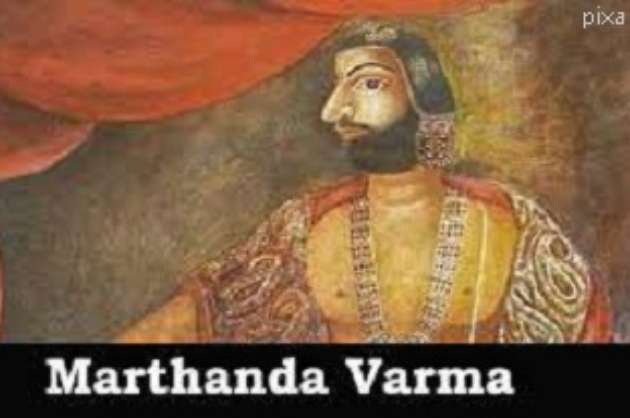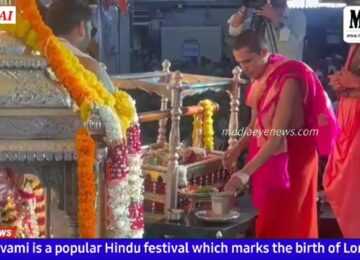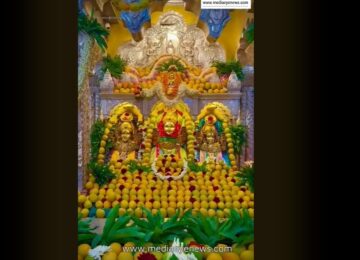Anupama Nair
www.mediaeyenews.com
I had written previously how along with the Portuguese, the Dutch East India Company also had designs on India. However, their stay in India was short lived due to this brave king of Travancore called Mathanda Varma I. Anizham Thirunal Marthanda Varma was also known as the "Maker of Modern Travancore". He was ruler of the Indian kingdom of Travancore previously called Venadu. He was the founder of the Travancore dynasty
Marthanda Varma is famous for defeating Dutch East India Company at the Battle of Colachel in 1741. He then adopted a European mode of discipline for his army and expanded his kingdom northward (to what became the modern state of Travancore. He built a sizeable army of about 50,000 men, as part of designing an "elaborate and well-organized" war machine, with the role of the Nair nobility and fortified the northern boundary of his kingdom His alliance in 1757 with the ruler of Cochin, against the northern Kingdom of Calicut, enabled the kingdom of Kochi to survive.
Travancore under Marthanda Varma made a deliberate attempt to consolidate its power by the use of Indian Ocean trade. It was the policy of Marthanda Varma to offer assistance to Syrian Christian traders to limit the European involvement in the Indian ocean. The main good sold was black pepper, but other goods also came to be defined as ‘royal monopoly items’ that required a license for trade between the 1740s and the 1780s. Eventually, the kingdom of Travancore challenged Dutch blockade of the Kerala coast.[4]
Trivandrum became a prominent city in Kerala under Marthanda Varma. He undertook many irrigational works, built roads and canals for communication and gave active encouragement to foreign trade. In January, 1750, Marthanda Varma decided to ‘donate’ his kingdom to Lord Padmanabha or Vishnu and thereafter ruled as the deity's Sri Padmanabha Dasa. Even today the king of Travancore calls himself Sri Padmanabha Dasa. Marthanda Varma's policies were continued in large measure by his successor, Rama Varma or Dharma Raja. Travancore then launched a series of raids on the Dutch forts in the area and captured them all. In retaliation, a Dutch artillery force landed at Colachel from Ceylon and conquered up to Kottar. The Dutch forces then advanced against Kalkulam, Travancore's capital. Marthanda Varma was then in the north of his state, he promptly marched his forces to the south and arrived at Kalkulam, just in time to avoid defeat.
In the following battle at Colachel the Travancore forces won a great victory over the Dutch. More than twenty Dutch soldiers were taken as prisoners of war from Colachel. Among them was Eustachius de Lannoy, whose bravery came under the attention of the king. Eustachius de Lannoy, commonly known in Travancore as the 'Valiya Kappittan' was entrusted with the organization and drilling of a special regiment, which he did to the "entire satisfaction of the king". De Lannoy was raised to the rank of general in Travancore army and proved to be of considerable service to Marthanda Varma in subsequent battles.
Following the expulsion of the Dutch, Marthanda Varma now turned his attention once again towards Kayamkulam. In 1742, Travancore forces attacked Kayamkulam and fought the Kayamkulam army led by Achuta Warrier and chiefs from Valiya Kakkanadu Madhom. Although Travancore was defeated in this battle, Marthanada Varma reinforced his army with cavalry brought in from Tirunelveli before mounting an attack on Kayamkulam, which led to the final defeat of the chiefdom. A treaty known as the Treaty of Mannar (1742) was signed, under which Kayamkulam became a tributary of the Kingdom of Travancore. However, in 1746, the Kayamkulam chief once again showed signs of rebellion and when his ‘conspiracies’ with the northern chiefdoms such as Kottayam, Changanassery, Cochin and Ambalapuzha came to the attention of Marthanda Varma. Kayamkulam was annexed by a final battle in which the chief fled to Cochin and a branch of the family settled near Charamood known as "Moothantedom". The kingdom of Travancore now extended from Kanyakumari to Kayamkulam in the north. Following this, Ambalapuzha, Kottayam and Changanassery were also annexed to Travancore by 1753. The principality of Meenachil was also annexed.
The ascension of Travancore seemed to have been quicker around 1749. Marthanda Varma had declared a state monopoly on pepper in Travancore in 1743, thereby delivered a serious blow to the commerce of the Dutch. The Treaty of Mavelikkara completely destroyed the Dutch. Thereafter, "considerable spice producing lands came under direct royal control, while those merchants participating in illegal trade in spices stood in danger of being executed".
If only we had shown such resistance to the British, we would not have been ruled for 190 years!




























